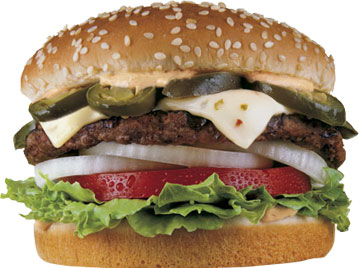- Plant & Food Research has posted this article from the New Zealand Herald –
The supermarket shopper of the future points at the plump salmon wanted for the evening meal – perhaps unaware that it may have been reared on a diet comprising significant amounts of insects.
Black soldier fly larvae, to be exact. This fly species may hold part of the answer to one of the world’s most pressing problems: the waste of up to 30 per cent of all human food.
New Zealand’s Plant & Food Research are in the vanguard of exploration of how to grow, feed and harvest black soldier fly larvae so they can be used in feed for New Zealand’s growing fish farming industry – and address that arresting 30 per cent waste statistic.
Katrina Fletcher, Food and Bio-product Technologist for Plant & Food Research, says the potential is exciting:
“Our work aims to contribute to a circular bio-economy by utilising materials that would otherwise go to landfill – instead turning them into fish food, in the most sustainable way and helping to create new export streams.”
Dr Jocelyn Eason, General Manager Science – Food Innovation at Plant & Food Research, says:
“Globally, we waste about a third of the food that’s produced. We waste it at different parts of the supply chain, in the production, the orchards and fields; transportation; and we waste it in the market and in consumers’ homes.
“If there are streams of food that can’t be sold, or parts that can’t be eaten (like seeds), then we need to look at converting them into something else. That might be juices or purees, they could be converted to feed for animals, even used to make new biomaterials. The important thing is taking those wasted bioresource streams and circling them back into the system, leaving nothing behind.”
Fletcher and her colleagues are hard at work, looking to find ways of enabling that circular bio-economy. They are using wheat flour by-products, low-grade kiwifruit and other low-value food to produce rapidly-growing black soldier fly larvae that can replace less sustainable fish food ingredients.
“Black soldier fly larvae are amazing,” she says.
“They can feed on just about any fruit, plant or fish waste, although we have to ensure they are reared on waste materials suitable for feeding to fish aimed for human consumption.
The adult flies lay eggs; once hatched the larvae are fed on different wastes, growing rapidly until they are ready for harvesting at about three weeks old. They are then typically processed into defatted insect protein meals and insect oils that can at least partially replace animal feed ingredients such as fishmeal, soybean meal and canola oil.
Fletcher and her colleagues are also looking at how to increase the polyunsaturated fatty acid (PUFA) content of insect larvae by manipulating the diet of black soldier flies and native insect species. High PUFA insect ingredients would reduce the reliance of animal feeds on fish oil for these essential fatty acids and free up more fish oil for human consumption.
Insects are able to convert one quarter of the waste they are fed into a stream of high value ingredient product. The remaining partially-digested waste and larvae excreta, called “frass”, can be further digested and used to produce biofuel or a natural nitrogen-rich fertiliser. This maximises the value of our food crops, upcycling most of our food waste, and making significant contributions to a circular bio-economy.
This work dovetails with another massive Plant & Food Research undertaking – making use of the whole fish once it’s harvested. Dr Susan Marshall heads Cyber-Marine, a five-year programme funded by the Ministry of Business, Innovation and Employment that aims to create smart factories using AI-integrated sensor systems.
They will ultimately be able to tell what useful molecules are in a fish then direct how the factory processes it, extracting the components with the most value while retaining useful properties.
It means thinking about fish as more than simply the food on our plates:
“Most people look at a fish and they see the fillet and whatever is left over. But really we should think of fish more like a container full of useful components that can be used in a multitude of ways,” Marshall says.
Using the whole fish to make high value products has potential to increase the value of New Zealand’s seafood industry, without needing more fish to be caught or affecting the availability of seafood. It also allows much more efficient use of energy used for capture and processing.
“It’s about understanding whether most value comes from exporting whole unprocessed fish, or extracting a variety of molecules, or, more likely, a combination of the two,” she says.
“We want to design our food production systems so we’re using everything that’s produced,” says Eason. “It takes energy to produce food, and we don’t want to waste that energy. We also don’t want to cause damage to the environment – food waste fills up landfills, where it produces methane and other greenhouse gases, contributing to climate change.
“The aim is to get maximum value from the harvest by fully utilising the bioresource we produce, and ultimately making sure food production is sustainable, with everyone being able to access the food they need.
“It’s also really important to adopt practices at household level. That includes planning meals before you go to the supermarket and only buying what you need; understanding your fruits and vegetables and how best to store them; and thinking about how best to use your leftovers.
“Don’t be afraid of the ‘uglies’ – fruit and veg that might not look great but still tastes good and has all the nutrition,” says Eason.
Source: Plant & Food Research. The article was originally published in the NZ Herald.












